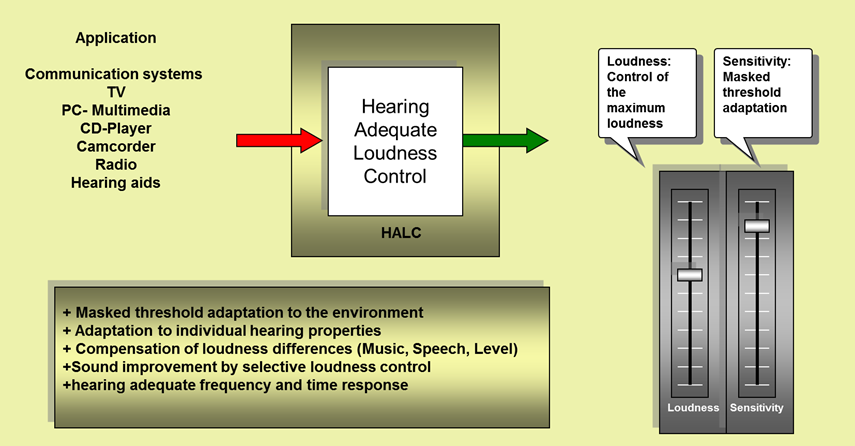
|
Sound acoustics |
|
Ingenieurbüro für Nachrichtentechnik und Akustik |
|
HALC principle for hearing adequate loudness control |
|
Intended use: Imagine you are watching TV and have adjusted your volume control to a level that you understand a running talk properly. Suddenly music sounds so loud, that you are forced to turn down the volume. However if some time later the talk is ongoing you hear nearly nothing. On the one hand the producer tries to record acoustics as real as possible, on the other hand it is in most cases impossible to playback the noise of a aircraft with real loudness in order to understand some time later whispering. If we listen to music we are not able to hear faint passages, if they are masked by environment noise or if the music shall be only played as background. Strong loudness differences appear also in telecommunication systems by terminals, network and transmission technique. In many cases the dynamics is too high, in some cases high dynamics is desired.
Our Solution: In order to fulfill both requirements the HALC principle offers to control the maximum desired loudness of loud events and the sensitivity for faint events independently. Faint events are adjustable with a sensitivity control, which can be adapted exactly to the masked threshold of the human hearing system, that even so whispering is audible in a distorted environment. If full dynamics is desired the sensitivity is turned down. HALC operates in contrast to a simple AGC with hearing adequate selective weighting and time masking in order to achieve correct loudness conditions.
Please feel free to listen the example below by mouse click onto “Original” and “Processed” in the chart below for comparison. This listening test example demonstrates, how a constant loudness can be achieved also for telecommunication systems independent of the received signal.
|

|
Original |
|
Processed |
|
Auditions |
|
Original |
|
Processed |